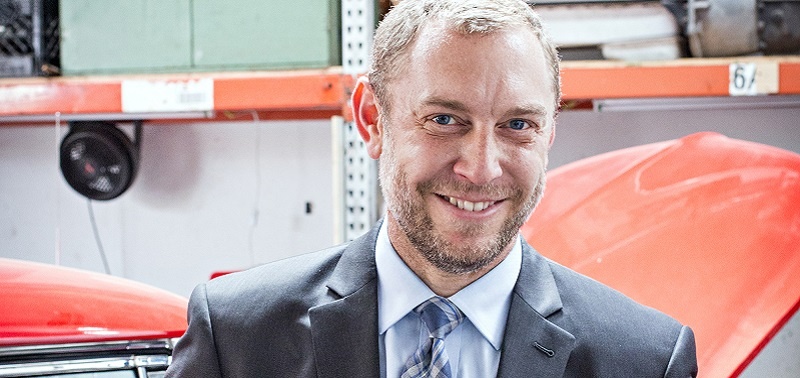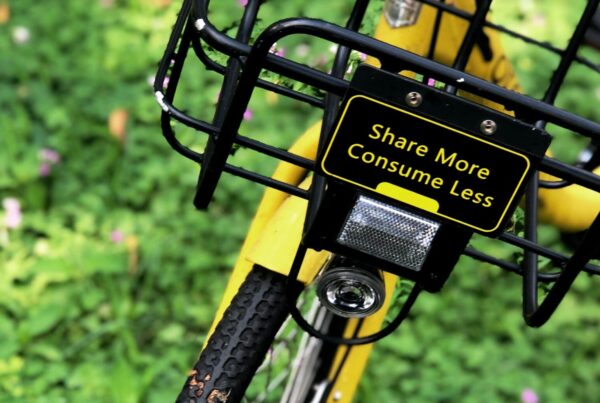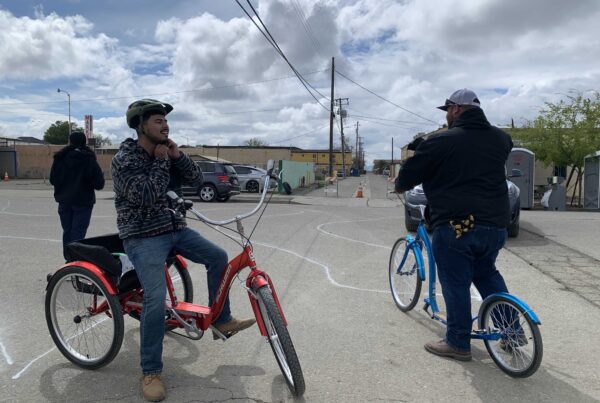At the Live Ride Share conference earlier this year, Los Angeles Taxicab Commission President Eric Spiegelman surprised a few people with his magnanimous outlook on the ride-for-hire ecosystem. “When people hear I’m the Taxicab Commissioner, they think I must hate Uber and Lyft,” he told the crowd. “I don’t. We have the same goals in mind.”
Spiegelman was appointed by Mayor Eric Garcetti in 2014 to help level the playing field between taxis and ride-sourcing companies like Uber and Lyft in LA. His progressive approach to the job has resulted in national media coverage and – in the near future – will lead to the first universal e-hailing app for LA.
The following is a lightly edited version of the Shared-Use Mobility Center’s conversation with Eric Spiegelman.
Can you give us an overview of the role of the Taxicab Commission President?
Last fall, The Mayor asked the Commission to take all steps necessary to level the playing field between our local taxi companies, on one hand, and UberX and Lyft, on the other. My job is to find the best possible way to effectuate that mandate. I’ve gone about this by acting as a catalyst for conversation, basically running idea after idea by the other members of the Taxi Commission, the taxi companies, the taxi drivers, the Department of Transportation, the City Council, and the Mayor’s office. So far only one idea has made it completely through this gauntlet: the creation of an app-based taxi marketplace, which I’ll go into detail about later in this interview.
What has surprised you most about the job?
How absolutely fascinating taxi regulation is. This is an industry that’s been regulated by government for 350 years, since King Charles I allowed hired coaches to serve Stuart-era London. And the way it’s been done this whole time might suddenly have become obsolete only in the last 3 years. There’s a tectonic shift happening in this field right now.
What have your biggest challenges been?
Well, when your taxicabs are regulated in basically the same way your grandfather’s taxicabs were regulated, which is basically the same way his grandfather’s taxicabs were regulated, it’s very difficult to walk in and say, “Hey, maybe we should look at this new way of doing things.” There’s a bit of institutional inertia, which is completely understandable, and it’s part of my job to navigate that.
The number of applications to become a taxi driver in LA is down almost 50% from a year ago…could we be facing a future with significantly fewer cabs?
Future? That’s the present. I raised the idea of expanding the size of the Los Angeles taxi fleet recently (to help compete with the coverage density that Uber and Lyft have), and a representative from one of our local cab companies told me, “Eric, we don’t have enough drivers for the cars we have.” There are empty taxis sitting in lots right now. Night drivers are skipping over to UberX en masse. The taxi driver labor pool is voting on the future of their industry, and they’re doing so with their feet.
Can you tell us about the new e-hail app that LA is developing? How will it work, and when might it roll out?
To fulfill the Mayor’s mandate, the Taxi Commission formed a working group to figure out how to provide taxi drivers with the technological advantages enjoyed by UberX. The plan is to pool all of our taxi drivers onto one app-based taxi marketplace, and then allow third party developers to create their own passenger apps that connect to the taxi marketplace. Any app that wishes to let passengers call a cab will have access immediately to the entire fleet. The idea is to encourage competition on the passenger side of the equation while providing stability and density on the driver side. The more apps that compete for passengers, the more money that finds its way into taxi driver pockets.
What else are you doing to help ensure equal competition between cabs and TNCs? Is peaceful coexistence possible?
In order to be effective, the taxi marketplace app may require some changes to City regulations. The Mayor asked the Taxi Commission to reform these rules, and the Commission decided that any changes should be made in the context of technology. So we will recommend some legal reforms, as well.
How is the current taxi/TNC climate affecting service to low-income communities? Or for people who need access to wheelchair-accessible vehicles?
Surprisingly, the growth of UberX and Lyft caused an increase in the amount and quality of taxi service to South Los Angeles. We don’t have data that explains why this happened, but we have some theories.
A decline in taxi service would set back the clock on civil rights for the disabled community here by 30 years. Los Angeles has the highest number of wheelchair-accessible taxicabs in the nation. This should contribute to every Angeleno’s sense of civic pride –our Department of Transportation has the best record of taxicab accessibility in all of the United States. Roughly 10% of our fleet is wheelchair-accessible. This hasn’t just been through mandate; in many ways we’ve proven that the economics of operating a wheelchair-accessible cab work quite well. It’s an all-around fantastic example of government success.
What is your utopian vision for the future of transportation in LA? What might it take to get there?
I just want to see an end to gridlock. Or, at least, an increase in the number of safe, equitable, inexpensive alternatives to driving. Mayor Garcetti and Department of Transportation General Manager Seleta Reynolds are pushing boldly toward this very future, and their leadership fills me with confidence.
Do you have a favorite taxi ride or experience? If so, could you share it?
My favorite experience, generally, is just talking to taxi drivers and listening to their stories. Driving a taxicab is considered a gateway to the American Dream, and you can hear some amazing stories about why people came to the United States, what they risked, and what it’s meant to their families.
What are your hobbies outside of work?
I take singing lessons.



